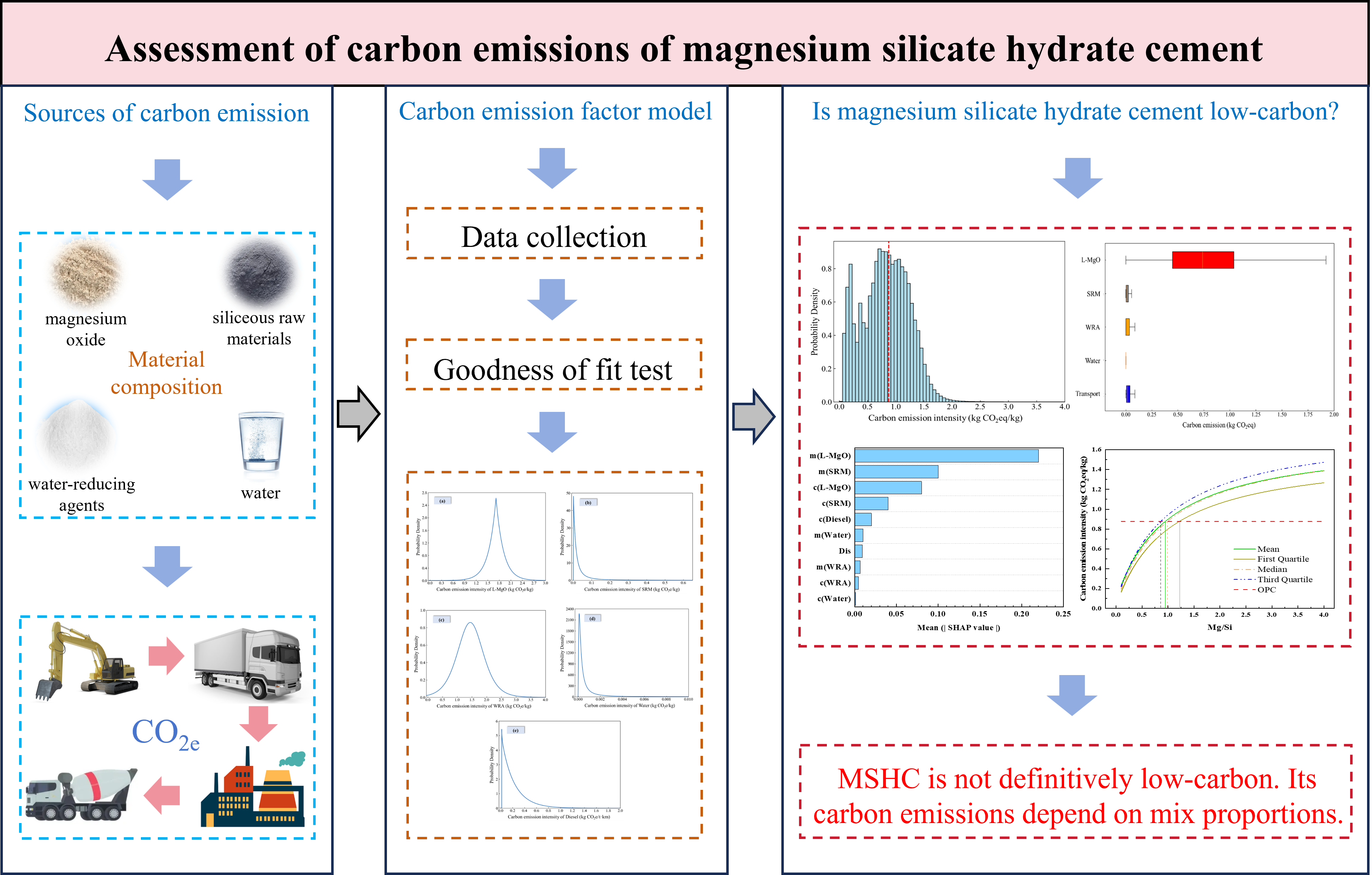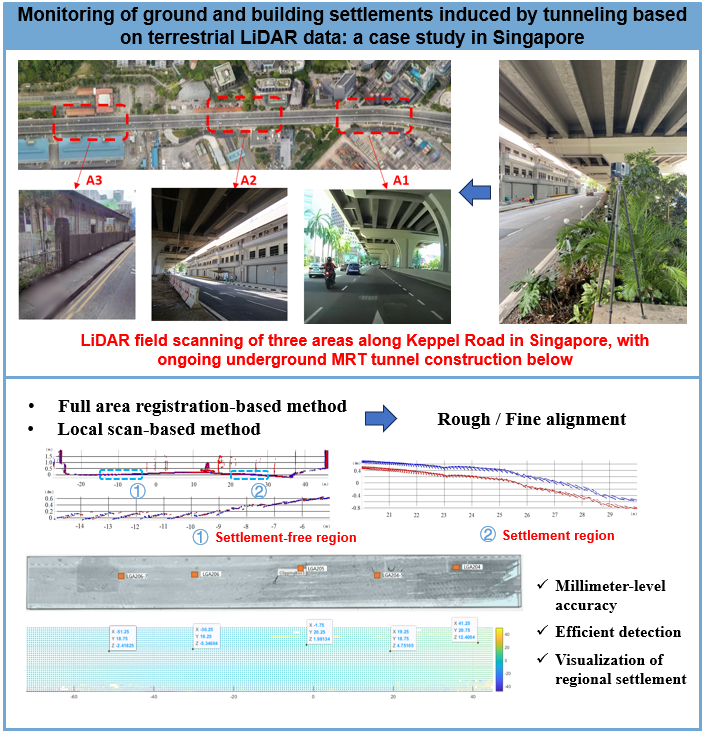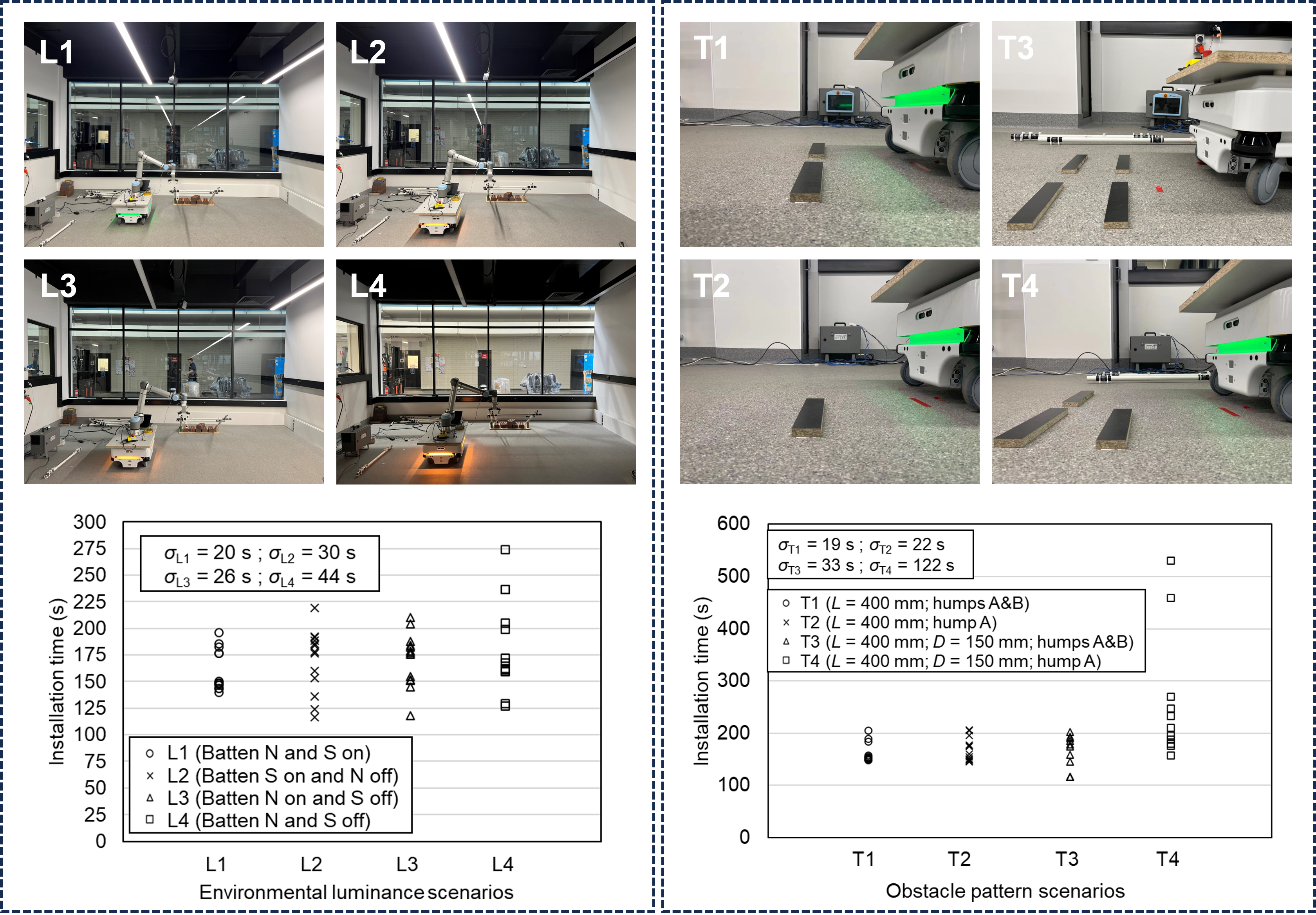
Smart Construction
ISSN: 2960-2025 (Print)
ISSN: 2960-2033 (Online)
CODEN: SCABAK
Contact
For any inquiries regarding journal development, the peer review process, copyright matters, or other general questions, please contact the editorial office.
Editorial Office
E-Mail: smartcon@elspub.com
For production or technical issues, please contact the production team.
Production Team
E-Mail: production@elspub.com
About This Journal
Assessing the low-carbon potential of magnesium silicate hydrate cement: a probabilistic life cycle approach
Received
26 Feb 2025
Accepted
27 Apr 2025
Published
16 May 2025
Magnesium silicate hydrate cement (MSHC), as an innovative low-carbon cementitious material, is considered a potential substitute for ordinary Portland cement (OPC). However, uncertainties in the carbon emission factors of raw materials and mix proportions pose challenges for assessing its life cycle carbon emissions. This study employs a probabilistic life cycle assessment (PLCA) to evaluate the carbon emission intensity of MSHC and analyze its uncertainties. Leveraging machine learning techniques, a predictive model for the carbon emission intensity of MSHC was developed, and sensitivity analysis was conducted on various characteristic parameters. The results indicate that although MSHC is regarded as a low-carbon material, it does not exhibit low-carbon characteristics in all scenarios compared to OPC. The carbon emission intensity of MSHC is closely related to its mix proportions. Depending on different mix proportions, the average carbon emissions of MSHC range from 0.174 to 1.419 kg CO2e/kg. L-MgO is a key factor influencing the uncertainty of MSHC carbon emissions. Notably, the Mg/Si ratio is a critical factor influencing the carbon emission characteristics of MSHC, with a low-carbon threshold range observed between approximately 0.8 and 1.0.
Correction to: Monitoring of ground and building settlements induced by tunneling based on terrestrial LiDAR data: a case study in Singapore
Received
14 Apr 2025
Accepted
08 May 2025
Published
14 May 2025
Ground and building settlements induced by tunneling excavation are common in cities. Such settlements can cause instability of the ground and threaten the safety of the upper infrastructures or buildings. Hence, it is vital to monitor the settlements during tunnel excavation to identify any potential risk. The current approach for settlement monitoring relies on manual measurements, which suffers from low efficiency and high labor cost. To improve monitoring efficiency, this study presents a settlement monitoring method based on terrestrial LiDAR data, which mainly consists of rough and fine alignment steps. Algorithms are developed to automatically process the 3D point cloud data obtained from terrestrial LiDAR and obtain settlement values for grounds and buildings. The proposed technique was applied and validated in a region with on-going tunneling works in Singapore. Different monitoring strategies including local-scan based method and registration-based method were examined and compared in this case study. Results demonstrated that the local scan-based monitoring method could yield more accurate settlement measurements compared with the traditional survey method. Registration-based method had higher calculation efficiency but with insufficient accuracy. In general, it is demonstrated that the LiDAR based settlement monitoring method is feasible in engineering practice, with measurement errors controlled within 2–3 mm, and has great potential to improve efficiency and reduce labor cost required by the traditional method.
Effects of environmental factors on robotic building processes: a physical experimental investigation
Received
29 Jan 2025
Accepted
22 Apr 2025
Published
06 May 2025
As robotic applications in building processes increase, the majority of studies focus on development of algorithms for object targeting, path planning, and localisation. Very limited attention is given to environmental factors, such as varying luminance and presence of undetected obstacles, that are common on construction sites and can significantly influence the robotic system performance. To address the gap, this work investigates the effects of environmental conditions on robot performance in structural assembly. A series of physical experiments was conducted in a laboratory setting to evaluate the effects of different lighting conditions on the positional accuracy of the robotic arm, the time required to install components, and the overall successful rate of the robotic assembly. The coordinates and orientations of installed AprilTag markers, captured by a red green blue-depth (RGB-D) camera, were then analysed to determine the effects of luminance levels on the accuracy of the positioning robotic system in two different assembly tasks. Furthermore, under constant luminance conditions, obstacles were arranged in various patterns along the path of a mobile robot to evaluate changes in trajectory and alignment disturbances. Differences in robot orientation, installation times, and completion status of the assembly tasks were also recorded to understand the impact of obstacle configurations on the efficiency and adaptability of the robotic system in structural assembly.



